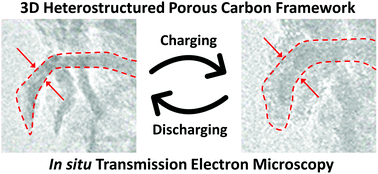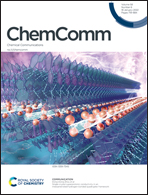Efficient lithium-ion storage using a heterostructured porous carbon framework and its in situ transmission electron microscopy study†
Abstract
A heterostructured porous carbon framework (PCF) composed of reduced graphene oxide (rGO) nanosheets and metal organic framework (MOF)-derived microporous carbon is prepared to investigate its potential use in a lithium-ion battery. As an anode material, the PCF exhibits efficient lithium-ion storage performance with a high reversible specific capacity (771 mA h g−1 at 50 mA g−1), an excellent rate capability (448 mA h g−1 at 1000 mA g−1), and a long lifespan (75% retention after 400 cycles). The in situ transmission electron microscopy (TEM) study demonstrates that its unique three-dimensional (3D) heterostructure can largely tolerate the volume expansion. We envisage that this work may offer a deeper understanding of the importance of tailored design of anode materials for future lithium-ion batteries.



 Please wait while we load your content...
Please wait while we load your content...
